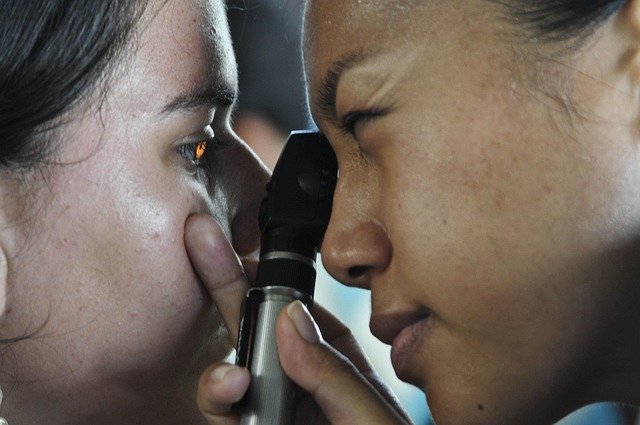Hair Transplantation in the USA: Regain Confidence With Real Results
Hair loss affects many people across the USA, often influencing self-esteem and overall appearance. Hair transplantation has become a widely discussed solution, offering long-term results for those seeking to restore natural density and coverage. Unlike temporary fixes like topical treatments or styling products, modern hair transplant methods provide a lasting approach that blends with existing hair growth. The procedure has evolved significantly in recent years, using advanced techniques to ensure minimal discomfort and natural-looking results. Understanding how it works, who makes a good candidate, and what kind of aftercare is needed can help anyone considering this option make an informed decision.

How do modern hair transplant techniques work in the USA?
Modern hair transplant techniques in the USA primarily use two methods: Follicular Unit Transplantation (FUT) and Follicular Unit Extraction (FUE). FUT involves removing a strip of scalp from a donor area, usually the back of the head, and dissecting it into individual follicular units for transplantation. FUE, on the other hand, extracts individual follicles directly from the donor area using a tiny punch tool. Both techniques allow surgeons to strategically place these follicular units in thinning or balding areas, creating a natural hairline and density.
Who is a good candidate for hair restoration surgery?
Ideal candidates for hair transplantation are individuals with sufficient donor hair and realistic expectations about the outcomes. Generally, those experiencing male or female pattern baldness, with stabilized hair loss, make good candidates. Age is also a factor, as younger patients might continue to lose hair, potentially affecting long-term results. It’s essential for candidates to have overall good health and be free from conditions that could impair healing or hair growth. A consultation with a qualified hair restoration specialist can help determine if you’re a suitable candidate.
What factors influence the success of hair transplantation?
Several factors contribute to the success of hair transplantation. The skill and experience of the surgeon play a crucial role in achieving natural-looking results. The quality and quantity of donor hair are also vital, as this determines the coverage that can be achieved. The patient’s overall health, including any underlying medical conditions or medications that might affect hair growth, is another important consideration. Following post-operative care instructions diligently and maintaining a healthy lifestyle can significantly impact the final outcome.
What are the potential risks and side effects of the procedure?
While hair transplantation is generally safe, like any surgical procedure, it comes with potential risks and side effects. These may include infection, bleeding, scarring, or uneven hair growth. Some patients might experience temporary shock loss, where existing hair falls out before new growth begins. In rare cases, there can be issues with graft survival or an unnatural-looking hairline if not performed correctly. It’s crucial to discuss these potential risks with your surgeon and choose a reputable clinic to minimize complications.
What unique advancements in hair transplantation are happening in the USA?
The USA is at the forefront of hair transplantation technology and techniques. Recent advancements include robotic-assisted FUE systems, which offer increased precision and reduce the risk of human error. Platelet-rich plasma (PRP) therapy is often combined with transplantation to enhance graft survival and stimulate hair growth. Some clinics are exploring cell-based therapies and hair cloning, aiming to increase the available donor supply. These innovations continue to improve the efficacy and natural appearance of hair transplant results.
What can patients expect before, during, and after the procedure?
Before the procedure, patients undergo a thorough consultation to assess their suitability and plan the transplant. This includes discussing expectations, designing the hairline, and preparing for the surgery day.
During the procedure, which can last several hours, patients remain awake under local anesthesia. The surgeon and team meticulously extract and implant hair follicles according to the agreed-upon plan.
After the procedure, patients can usually return home the same day. Initial recovery takes about a week, with most visible signs of the procedure fading within a month. However, it’s important to note that transplanted hair typically falls out within weeks, with new growth beginning in 3-4 months. Full results are usually visible after 12-18 months.
| Provider | Technique | Estimated Cost Range |
|---|---|---|
| Bosley Medical | FUE/FUT | $4,000 - $12,000 |
| Hair Club | FUE/FUT | $5,000 - $15,000 |
| NeoGraft | FUE | $5,000 - $15,000 |
| Restoration Robotics (ARTAS) | Robotic FUE | $8,000 - $20,000 |
Prices, rates, or cost estimates mentioned in this article are based on the latest available information but may change over time. Independent research is advised before making financial decisions.
Hair transplantation in the USA offers a permanent solution for those struggling with hair loss. With advanced techniques, skilled surgeons, and ongoing innovations, patients can achieve natural-looking results that restore both hair and confidence. While the procedure requires careful consideration and a significant investment, for many, the long-term benefits outweigh the initial costs and recovery period. As with any medical procedure, thorough research and consultation with qualified professionals are essential steps in making an informed decision about hair restoration.
This article is for informational purposes only and should not be considered medical advice. Please consult a qualified healthcare professional for personalized guidance and treatment.




